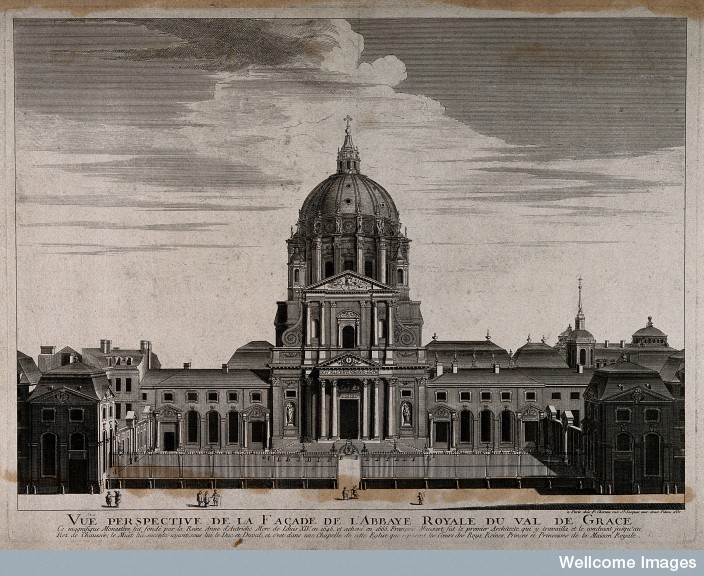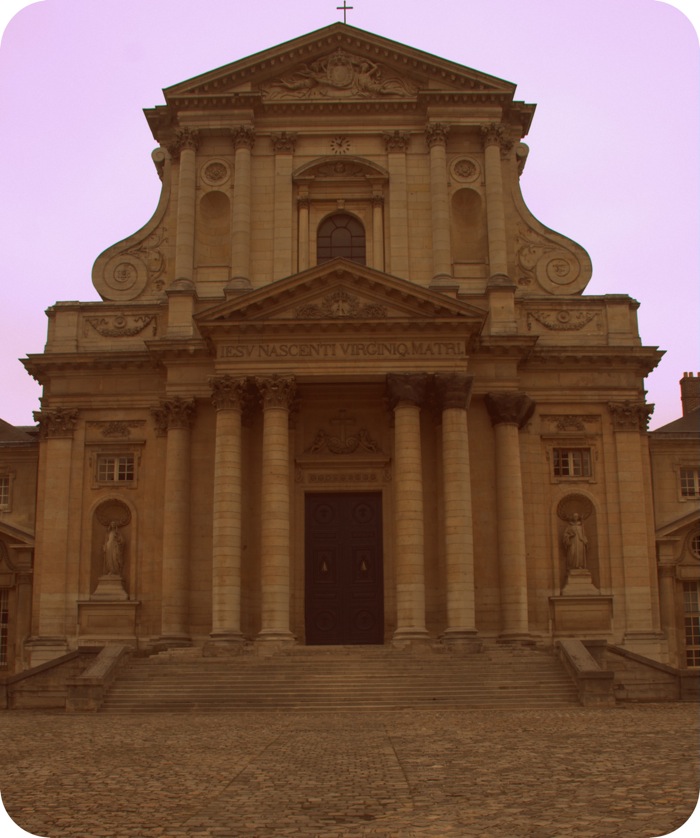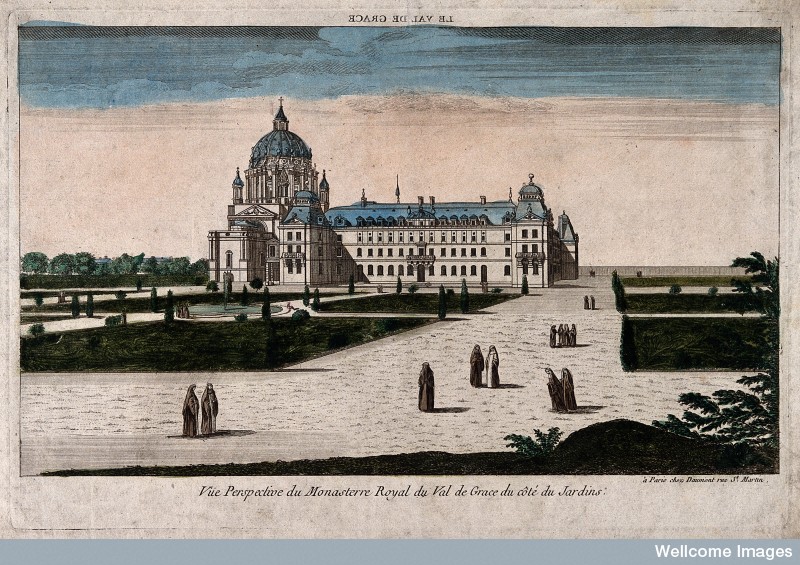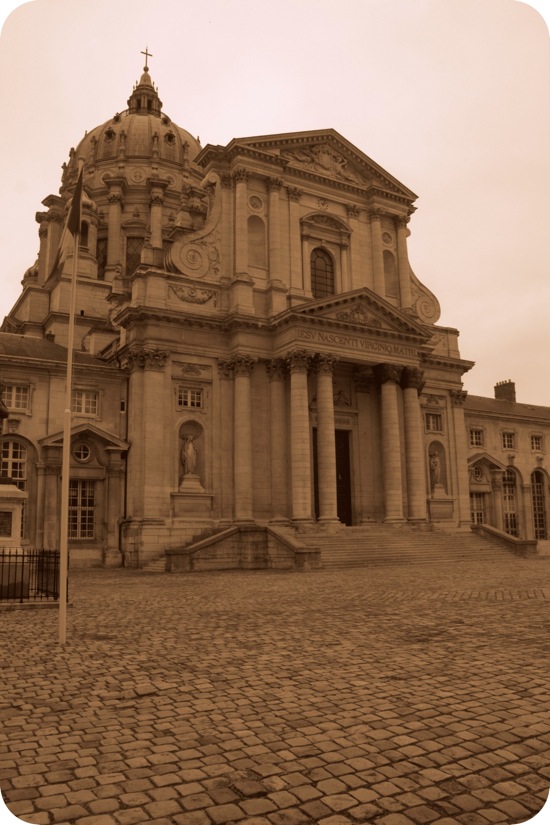France (Wikipedia)
Although Lister did not mention Val-De-Grâce in his pocketbook or memoirs, his fellow traveler Philip Skippon noted:
Valdegrace is a new church, building at the expense of the late queen-mother of France; it hath a handsome ascent up to it by several stone steps, which leads into a portico in the front of the church; it is made after the Italian fashion, and hath a cupola between the choir and the nave. That queen’s heart is buried here.
Queen Anne of Austria (1601-66) built the church and the monastery of the Val-de-Grâce to express her gratitude to God for the birth of Louis XIV, and symbolically, the church is a visual manifestation of her power. In particular, its building celebrated her victory in the Fronde and celebrated her status as sovereign.
Val-de-Grâce is in the Faubourg Saint-Jacques, an area populated by many religious communities; by building the church, Queen Anne ‘joined some prestigious foundations and created a stronger lure for other Counter-Reformation religious houses’. 1 The monastery is now a military hospital.
Gallery
Back to top
- Jennifer G. Germann, ‘The Val-de-Grâce as a Portrait of Anne of Austria: Queen, Queen Regent, Queen Mother’, in Architecture and the Politics of Gender in Early Modern Europe, ed. Helen Hills (Aldershot: Ashgate, 2003), 47-63, on 57. ↩




